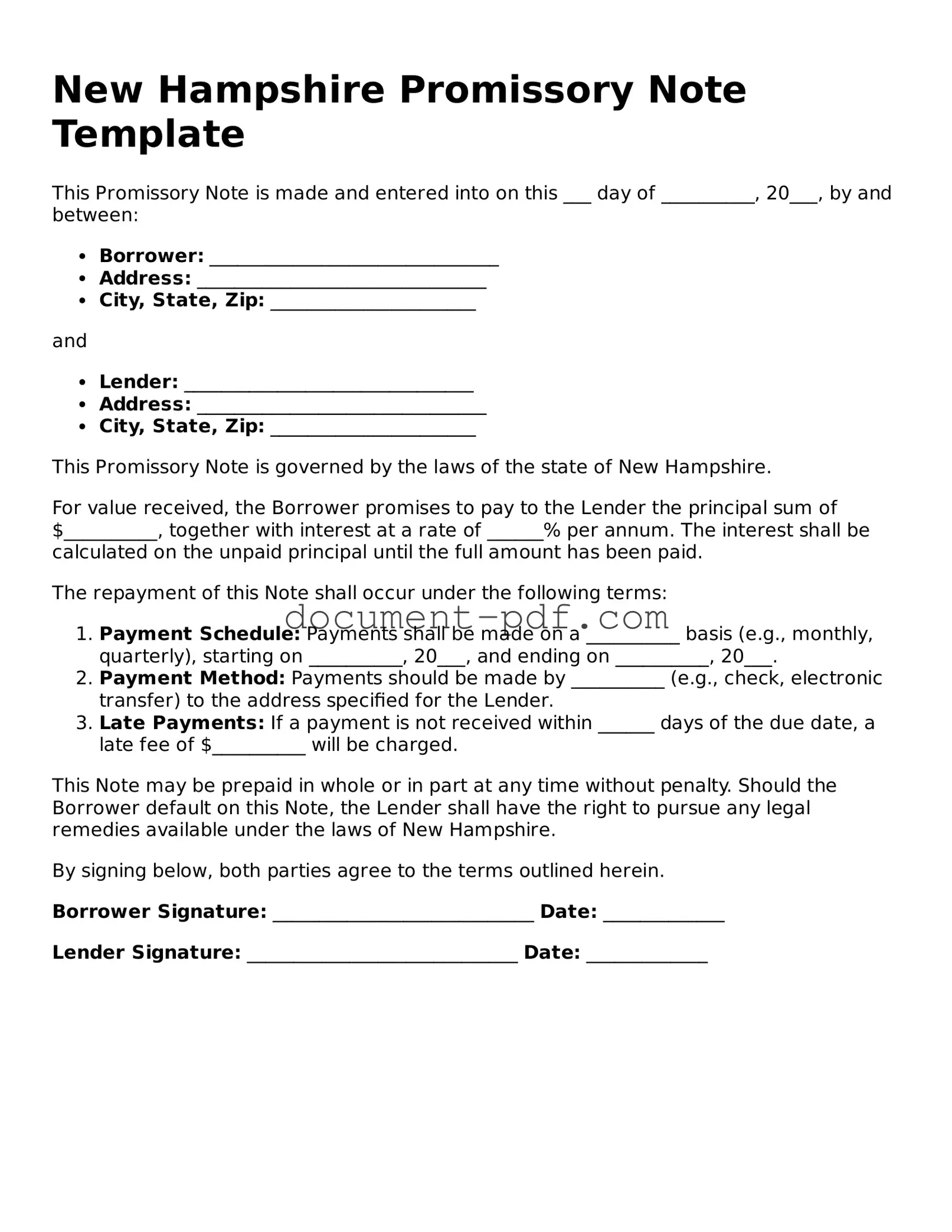New Hampshire Promissory Note Template
This Promissory Note is made and entered into on this ___ day of __________, 20___, by and between:
- Borrower: _______________________________
- Address: _______________________________
- City, State, Zip: ______________________
and
- Lender: _______________________________
- Address: _______________________________
- City, State, Zip: ______________________
This Promissory Note is governed by the laws of the state of New Hampshire.
For value received, the Borrower promises to pay to the Lender the principal sum of $__________, together with interest at a rate of ______% per annum. The interest shall be calculated on the unpaid principal until the full amount has been paid.
The repayment of this Note shall occur under the following terms:
- Payment Schedule: Payments shall be made on a __________ basis (e.g., monthly, quarterly), starting on __________, 20___, and ending on __________, 20___.
- Payment Method: Payments should be made by __________ (e.g., check, electronic transfer) to the address specified for the Lender.
- Late Payments: If a payment is not received within ______ days of the due date, a late fee of $__________ will be charged.
This Note may be prepaid in whole or in part at any time without penalty. Should the Borrower default on this Note, the Lender shall have the right to pursue any legal remedies available under the laws of New Hampshire.
By signing below, both parties agree to the terms outlined herein.
Borrower Signature: ____________________________ Date: _____________
Lender Signature: _____________________________ Date: _____________
